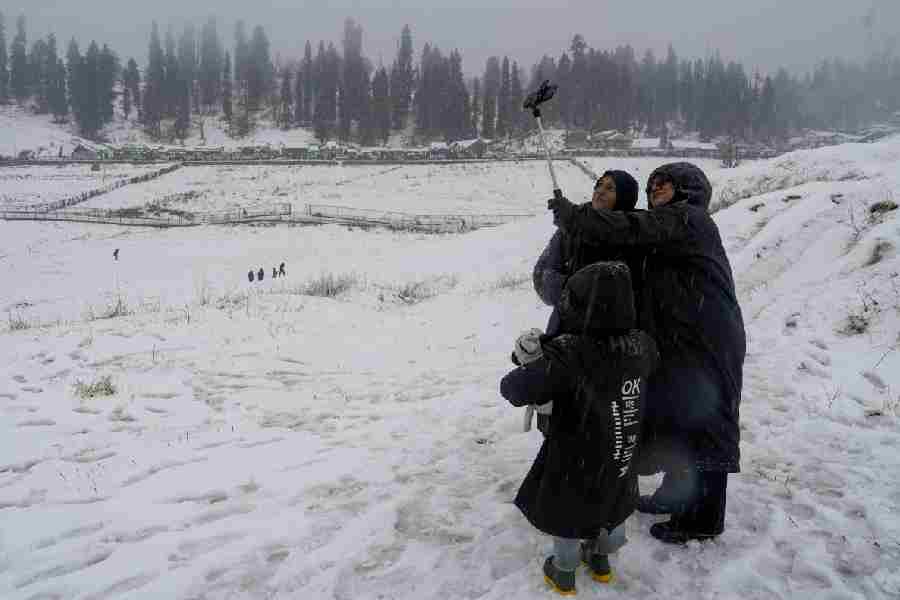The decision to allegedly unburden schoolchildren by deleting the Mughal era from their history curriculum has provoked amusing memes: images of the Taj Mahal complete with captions about its mysterious origins and jokes about gallant medieval Rajput rulers routed by invisible armies. These are good for a giggle, but they run the risk of misleading us into thinking that the Bharatiya Janata Party, in its bigotry, is trying to disappear the Mughal State. That would be a mistake; the Narendra Modi government is not trying to persuade Indians that the Mughals didn’t exist.
To understand what it is trying to do, we need to acknowledge the ideological ambition of the sangh parivar and the coherence of its multi-pronged assault on the idea of India as a non-denominational State. To destabilise Muslim citizenship, to undermine Muslim livelihoods, to segregate Muslim neighbourhoods and to render Muslim bodies vulnerable to attacks by vigilantes and the police is the majoritarian project in the present, the here and now.
The Citizenship (Amendment) Act, the National Register of Citizens, the vicious campaigns against interfaith love in the name of love jihad, the criminalisation of the cattle trade, the videos of Muslims being beaten and coerced into singing the national anthem or chanting ‘Jai Shri Ram’ represent the many ways in which this project of public subordination is accomplished.
But all of these taken together represent brute supremacy, not hegemony. Hegemony is achieved when civil society comes to accept Hindu supremacy as legitimate. To justify a Hindu supremacist present, the State needs to invent a past, a historical arc that bends towards the Hindu rashtra that Narendra Modi is busy building.
Majoritarian States have done this in various ways. The Reconquista in Spain wasn’t just the military expulsion of Muslims and Jews from Spain, it was also the intellectual and cultural erasure of seven centuries of Muslim presence via selective amnesia and the Inquisition. Israel’s claim to historical Palestine is based on an assertion of prior ownership that transcends history. But the example that is most relevant is also the one that is the most proximate: the Pakistani State and its deployment of history.
The past as taught in Pakistani schools consisted of a hop, step and jump history that took in only those periods that could be used to construct a genealogy for a Muslim nation state. The Indus Valley civilisation and its great archaeological sites were pressed into service to create a proto-history for Pakistan. Since Mohenjo Daro and Harappa pre-dated the so-called Aryan immigration, they had the advantage of supplying a non-Hindu myth of origin.
The narrative then pole-vaulted across millennia and landed in the early 8th century because the Arab invasion of Sind under Muhammad bin Qasim could be used as the start of Muslim settlement and State-building in the subcontinent. From there a smaller skip — less than three hundred years — brought Mahmud of Ghazni into view and then a little jump brought the sponsors of the Pakistan Ideology to the safe harbour of the Delhi sultanate, established in the early 13th century. From there on, Pakistani school children could be taught continuous history because medieval India was largely run by Muslim rulers. Colonial India was understood as the oversetting of a glorious Muslim past by Western modernity, a decline and fall that was reversed by the visionary leadership of Syed Ahmad Khan, Muhammad Iqbal and Mohammad Ali Jinnah that culminated in a Muslim homeland.
This is precisely what the dropping of the Mughals from school textbooks is meant to do: marginalise a pan-Indian empire in the public consciousness so that the period of its existence begins to seem like an interregnum that interrupts the real story: the soul of the Hindu Nation, long suppressed, finding utterance in the enthronement of Hindutva. Once the history of the main medieval States is dropped from the curriculum — if the Mughals go, can the Delhi Sultans be far behind? — then the history of medieval India can be written as a long prologue for the Hindu nation that V.D. Savarkar and M.S. Golwalkar envisaged, that L.K. Advani campaigned for, that Modi and Yogi finally built.
Rana Sangha, Rana Pratap, Haldighati and Hemu can replace the histories of these Muslim empires. These heroes and those lost battles can be represented as the live embers of Hindu consciousness that lit the dark age of Muslim rule. Haldighati, in this reading, is not a defeat but the flint that strikes the spark, that keeps a flame alive, that in a distant future lights the political fire that brings Modi to power.
The elision of the Mughals is not meant to make them disappear; it is to rewrite them as a cautionary tale so that the necessary task of subordinating and disciplining Muslims becomes historically legitimate. It’s not for nothing that the Mughals were the first to be dropped; this is the intellectual equivalent of razing the Babri Masjid. In the communal shorthand that is majoritarianism’s only talent, all Indian Muslims are the children of Babur, Babur ki santan.
The systematic subversion of the rights of Muslim citizens and the vandalising of Indian history are two sides of one coin, two interlocking parts of a single project: the creation of a permanent political majority joined in bigotry. It isn’t only the Mughals who vanish; so does the history of the anti-colonial struggle led by the colonial Congress of blessed memory.
As Savarkar and his protégés (Nathuram Godse amongst them) are foregrounded, Gandhi recedes. In Milan Kundera’s The Book of Laughter and Forgetting, all that survives of a disgraced communist party leader, comprehensively airbrushed out of a group photograph, is his hat, borrowed for the occasion by a politburo colleague. Increasingly, all that survives of Gandhi are his spectacles, pressed into service as an emblem for the Swachh Bharat Abhiyan.
This regime’s mimicry of Pakistan in this hop-step-jump rewriting of India’s past might seem ludicrous as history but it is a deadly serious form of politics. If a nation is, in Benedict Anderson’s words, an imagined community, it can be re-imagined; and this is what the bowdlerisation of NCERT’s textbooks amounts to.
The great achievement of Indian history-writing since Independence was the production of a critical mass of rigorously researched history that added up to dense, comprehensive, chronological narratives of the subcontinent’s past. These narratives were contested and argued over but no school of history-writing, no syllabus committee, no government, ever tried to erase ideologically inconvenient eras of India’s past. The only answer to this politically deformed take on India’s past and present is to work at writing histories in which Indians of every sort can recognise themselves.
mukulkesavan@hotmail.com










